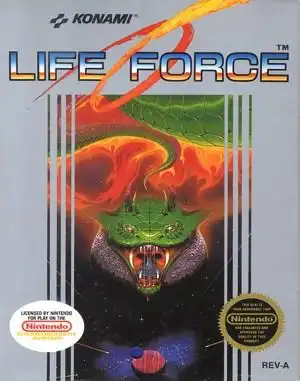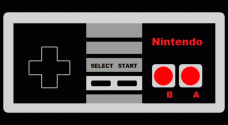Swapping quarters or blowing on cartridges, there are some retro games that just stick with you. Konami had a knack for addictive shooters back in the day, and while Gradius often gets the spotlight, its cousin, Life Force, holds a special, slightly stranger place in our nostalgic hearts.
Often mistaken for a direct Gradius sequel (sometimes even subtitled Gradius II on arcade marquees in the US!), Life Force carved its own path with a unique, often bizarre, biological theme and some key gameplay differences that made it stand out.
What Exactly Is Life Force? (The Salamander Connection)
Let's clear up the family tree right away. Life Force is actually the North American name for the game originally released in Japan as Salamander. Think of it like a spin-off from the main Gradius series, though it introduced features that would later influence Gradius itself.
When Konami brought Salamander to the US arcades, they decided to lean hard into the organic look of the first stage. They re-themed the entire game, changing backgrounds, enemy names, and even adding narration to create a narrative about flying inside a giant alien creature. This version was released as Life Force.
Later, an enhanced Japanese arcade version of Life Force was released, which blended the organic look with the classic Gradius-style power-up gauge, a departure from the original Salamander's random power-up drops. It's a bit confusing, but it means there are a few distinct arcade flavors out there!
Gameplay: More Than Just Another Shooter
Life Force kept the core horizontal scrolling shooter action Konami was known for, but threw in a fantastic twist: alternating horizontal and vertical scrolling stages. One minute you're blasting sideways through gooey organic tunnels, the next you're scrolling upwards through a pulsating alien brain or a field of eyeballs. This kept the gameplay fresh and visually interesting.
The power-up system varied depending on the version you played. The original Salamander and the US Life Force arcade versions had enemies drop specific power-up capsules you'd instantly collect. The Japanese Life Force arcade and the popular NES port adopted the Gradius-style gauge system. You'd collect capsules, which would light up options on a bar, letting you choose when to activate speed boosts, missiles, lasers, or those all-important "options" (multiples).
A defining, and sometimes frustrating, mechanic was losing all your accumulated power-ups upon death. Getting far into the game only to be reduced to your slow, single-shot basic ship could be brutal! Though, sometimes your options would hang around briefly, offering a slim chance of recovery.
The Co-Op Game Changer
One of Life Force's most celebrated features, especially in the arcade and on the NES, was its two-player co-op mode. This was a big deal! While Gradius was a solitary mission, Life Force let you team up with a friend, one controlling the Vic Viper and the other the Lord British ship.
Co-op added a whole new dimension – sharing the screen, coordinating attacks, and even adding a competitive edge for grabbing limited power-up capsules. It made the challenging levels feel a bit more manageable and significantly boosted the fun factor. Nothing beats tackling a tough boss with a buddy by your side!
Difficulty & The Konami Code
Let's be honest, Life Force could be tough. Konami shooters are known for their challenge, and this game was no exception. From dense enemy patterns to tricky environmental hazards, you needed quick reflexes and memorization.
However, compared to the sometimes punishing checkpoint system of Gradius, Life Force (at least in the NES version and arcade co-op) was a bit kinder, often allowing instant respawn upon death, preventing you from being sent back to the start of a long section.
For many NES players, the ultimate weapon against Life Force's difficulty wasn't a laser or a missile, but a sequence of buttons: Up, Up, Down, Down, Left, Right, Left, Right, B, A, Start. Yes, the legendary Konami Code! Entering it at the title screen granted you a full set of power-ups, making the initial stages much less daunting and letting you experience more of the game's unique levels.
Ports Galore: Where Did You Play It?
Life Force (or Salamander) saw action on a ton of systems beyond the arcade:
- NES/Famicom: Likely the most common version for many retro gamers. It combined elements of the US and Japanese arcade versions, added new levels, and featured the Gradius power-up bar. Despite some slowdown, it's a beloved classic.
- MSX: A drastically different port with unique levels, a story intro, and even ship merging!
- PC Engine: A highly regarded port closer to the arcade experience.
- Commodore 64: Praised as a strong conversion for the system.
- PlayStation & Saturn: Included in the
Salamander Deluxe Pack Pluscompilation. - Modern Collections: You can often find the arcade version in Konami's
Arcade Classics Anniversary Collectionon modern consoles and PC.
Each port had its quirks, making the experience slightly different depending on where you played it.
Why We Still Love Life Force Today
Life Force might not be as universally recognized as Gradius, but its distinct biological aesthetic, the thrill of two-player co-op, the satisfying power-up progression (when you could keep it!), and the sheer challenge cemented its place in the pantheon of classic shooters.
Whether you first encountered it in a smoky arcade, on a CRT screen attached to an NES, or through a modern compilation, Life Force remains a memorable blast from the past. It's a testament to Konami's golden age of shooters and a reminder that sometimes, the most interesting journeys are the ones taken inside something... squishy.
Life Force FAQ
Q: Is Life Force the same as Salamander?
A: Yes, Life Force is the North American name and a slightly re-themed version of the Japanese arcade game Salamander.
Q: Is Life Force Gradius 2?
A: No, Life Force is a spin-off of the Gradius series and part of the Salamander series. Gradius II is a separate game. Some arcade machines in the US did incorrectly label Life Force as Gradius II.
Q: Does Life Force have co-op?
A: Yes! Two-player cooperative gameplay was a major feature of Life Force in the arcade and on the NES, allowing two players to tackle the levels together.
Q: Can you use the Konami Code in Life Force?
A: Yes, the famous Konami Code (Up, Up, Down, Down, Left, Right, Left, Right, B, A, Start) works in the NES version of Life Force to give you a full set of power-ups at the start.


